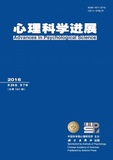|
|
The external validity of delay discounting in the field of substance addiction
YANG Ling, LIU Wenxin, ZHANG Yang, ZHANG Jianxun, NIU Lulin
2021, 29 (1):
140-149.
doi: 10.3724/SP.J.1042.2021.00140
Deficiency in inter-temporal decision making of substance addicts has been consistently confirmed by a lot of studies using monetary Delay Discounting Task. However, the recently emerging evidence from new variants of the monetary Delay Discounting Task (the addictive substance Delay Discounting Task, the Sexual Delay Discounting Task, and the Cross-Commodity Delay Discounting Task) highlighted some limitations in the single use of this paradigm in the delay discounting study of substance addiction, which need to be considered in terms of external validity. In the first place, delay discounting may be a domain-specific concept and the degree of delay discounting towards money may not equal to delay discounting in other aspects of addicts’ real life, as a drug, sex, and other natural rewards. Besides this, using Single-Commodity Delay Discounting Tasks may oversimplify the complicated process of inter-temporal decision making, while using paradigms like Cross-Commodity Delay Discounting Tasks may ecologically simulate dilemmas in addicts’ daily life. Last but not least, the monetary Delay Discounting Task is less sensitive to some clinical traits of addicts than its variant paradigms, it seems that specific tasks definitely have a better predictive effect on specific facets of inter-temporal decision making cared by different researchers from multiple perspectives. Future studies should further enrich and expand the research of Cross-Commodity Delay Discounting Task in the field of substance addiction to improve external validity, and further, explore the time factors that may affect the process of inter-temporal decision making.
Related Articles |
Metrics
|




